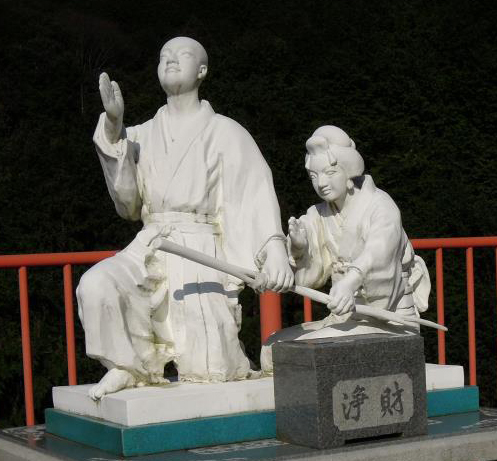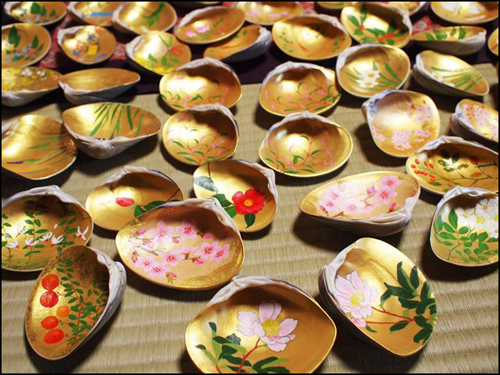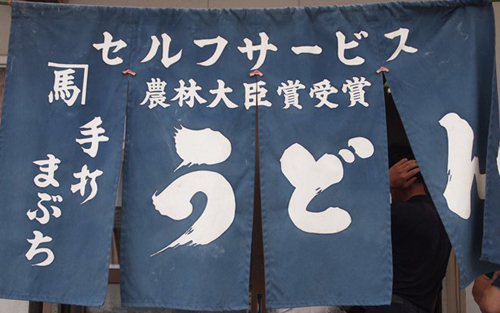154. The "Small Shell" Radical: 貝
There's good news about the 貝 radical. This symmetrical shape is visually simple with just seven strokes. It has no variant forms, and it doesn't change its shape from character to character.
This does create one problem, though. Several look-alikes with similar meanings share this radical, such as 貨 (432: money, goods), 貸 (747: to lend), and 賃 (942: wage, charges). Actually, many kanji share the 貝 shape. It's the on-duty radical in 31 Joyo kanji! Still more include 貝 as a component.
But this is essentially a boon. By understanding 貝, we gain insight into a significant number of Joyo kanji!
Photo Credit: Eve Kushner
Two look-alikes meet up in a sign! The top row says 三井 (みつい: a company name), and the bottom row says 賃貸 (ちんたい: leasing, renting, hiring). By the way, the 十 in the top line is just for decoration.
Names and Positions of This Radical
In English, the 貝 radical goes by three names: "small shell," "money," and "shellfish." So far, so logical.
In Japanese, by contrast, we find these three names: かい, かいへん, and こがい. Let's look at each one.
The Name かい for a Centered 貝 Radical
The radical name かい makes perfect sense, as that's the kun-yomi of the kanji 貝 (90: shellfish, shell). This all-purpose name works particularly well to describe characters in which 貝 lies at the center. Some examples:
買 (193: to buy)
費 (567: expense)
責 (728: responsibility, blame)
By the way, when 貝 is centered, it always has something above it, as you can see from this list. The only exception to that rule is the kanji 貝 itself.
The Name かいへん for a Left-Side 貝 Radical
With かいへん (貝偏), we have a more specific name. It describes kanji with 貝 on the left side. However, because so many Joyo kanji feature 貝 as a radical and because quite a few of those have 貝 on the left, we still have a bumper crop of かいへん kanji. Some examples:
財 (685: wealth)
販 (1715: marketing; selling)
賭 (2077: to bet, gamble)

Photo Credit: Yoshikazu Kunugi
In the Yoshino Mountains of Nara Prefecture, Tsubosaka-dera Temple (壷坂寺) is known for its power to restore lost eyesight. The writing says 浄財 (じょうざい: donation).
The Name こがい for the "Small Shell" Radical
Given how logical the first two names are, こがい seems to come out of the blue. But this name distinguishes "our" radical from another one with a similar name and shape:
貝 こがい (小貝: the "small shell" radical)
頁 おおがい (大貝: the "large shell" radical)
This other radical, 頁, is radical 181.
Photo Credit: Eve Kushner
A portion of a restaurant sign affords a great opportunity to see the "small shell" and "large shell" radicals together. They help to form the word 貝類 (かいるい: shellfish).
Shells as Money
As a radical, 貝 almost always means "money" or "value." How did this happen? Did it all start with that one entrepreneurial woman at the beach? You know who I mean. She sells seashells down by the seashore....
No, the kanji 貝 originated as a pictograph of a "pointy bivalve," says Henshall. And the autonomous 貝 character still means "shellfish, shell." Because the ancient Chinese used shells as money, 貝 has come to mean "valuable items" or "assets" when it serves as a radical, Henshall says.
That's rather mind-blowing. The meanings of the 貝 kanji and of the 貝 radical evolved in different directions, even though the shapes are identical.

Photo Credit: Yusuke Yamada
Kai-awase (貝合わせ) is an old Japanese game similar to the Western game Concentration or Memory. By the way, that game is known in Japan as 神経衰弱 (しんけいすいじゃく), which means “nervous breakdown"!
Here are the rules of Kai-awase:
1. There are 360 pairs of clamshells. Each pair has been painted with the same artistic motif inside, making it different from all other pairs. Alternatively, each pair contains two halves of a waka (a 31-syllable poem).
2. One shell in each pair goes face-down. The players keep the remaining shells by their sides.
3. Each player picks a shell from his or her batch and chooses a shell that's lying face-down, hoping it will match. The artwork or waka inside determines whether the player guessed right.
4. Whoever matches the most pairs wins the game.
When the 貝 Radical Means "Money"
It's not hard to find examples of the 貝 radical when it means "money." Just looking at the following definitions tells you that that's the case for these kanji:
資 (694: resources, funds)
貿 (792: to exchange, trade)
購 (1268: to purchase)
Henshall confirms that 貝 does indeed mean "money" in each of these characters."
By the way, that's also true here:
貧 (777: poor)
Because the 分 means "to cut up, divide," the wealth in 貧 has been divided up so many times that it results in a minuscule amount (i.e., poverty).

Photo Credit: Atsushi Otsuki
This self-serve (せルフサービス) udon (うどん) shop has won a prize from the government! Here's a breakdown:
農林大臣 (のうりんだいじん: Minister of Agriculture and Forestry)
賞 (しょう: prize)
受賞 (じゅしょう: winning a prize)
This wording enables us to see our 貝 radical twice, both times in 賞 (511: prize), which we'll revisit in a moment.
The left side tells us that the noodles are handmade (手打, てうち). The shop name is まぶち. This may come from the surname of the owner or founder, a name that most likely starts with 馬.
When the 貝 Radical Means "Value"
Sometimes the 貝 radical means "value" in a more abstract sense. Take, for example, these kanji:
賀 (630: to congratulate)
Henshall says that the top part, 加, means "to add," whereas the bottom means "valuable item." When you celebrate a joyous occasion that merits congratulations and you place your gift atop other gifts, you are "adding valuable items," he explains.
賢 (1221: wise)
Although this kanji started its life in a literal way, meaning "bountiful assets," it came to mean "wealth of wisdom," says Henshall.
This sense of 貝 as "value" has also influenced the following two kanji:
賞 (511: prize)
貴 (834: honor, value, prize)
Two more look-alikes, at least to some extent!
Photo Credit: Corey Linstrom
On this saké barrel, we see a brand name that includes 賢 (1221: wise):
七賢 (しちけん: the Seven Wise Men)
This name refers to seven wise Chinese men, but which ones? Apparently, there have been many wise men in China! The name could allude either to historical figures mentioned in the Analects of Confucius or to the scholars, writers, and musicians in the third century BCE known as the Seven Sages of the Bamboo Grove.
Three Stacked Shells
I would be remiss if I didn't share one more kanji that contains the 貝 radical. In fact, it consists only of this radical multiplied by three and stacked in a pyramid:
贔 (ヒ: power, strength)
This kanji is non-Joyo. And oh, what fun! It appears in several words that dazzle us with many more instances of 貝:
贔屓 or 贔負 (ひいき: favor, patronage, partiality)
贔屓目 (ひいきめ: seeing things or people in a favorable light)
贔屓贔屓 (ひいきびいき: each person supporting his or her favorite)
The first word, 贔屓, consists only of non-Joyo kanji. Incidentally, the active radical in 屓 is 尸 (radical 44, the "corpse" radical), not 貝. The less common variation on this word, 贔負, contains two kanji in which 貝 is the on-duty radical! The second kanji, 負 (383: to defeat), is in the Joyo set.
Let's move down a row to 贔屓目, which ends with 目. This kanji, of course, has nothing to do with 貝, but I like seeing the 目 shape repeat here five times!
Meanwhile, I can't stop smiling as I look at 贔屓贔屓! In the spirit of the definition, I'm happy to deem this my favorite term in the whole Radical Note, and I'll definitely support this favorite in whatever way it requires support!
